In August 2015, the old Hotel Okura, a design icon from the 1960s, closed its doors. Before demolition work began on the 12-story cult hotel, against which signatures were collected worldwide from loyal guests and design experts, there was a week in which interiors steeped in history were removed and put into storage. A measure to manage the balancing act between renewal and preservation without unnecessary strain. Only those who knew the old house can really judge whether it has succeeded.
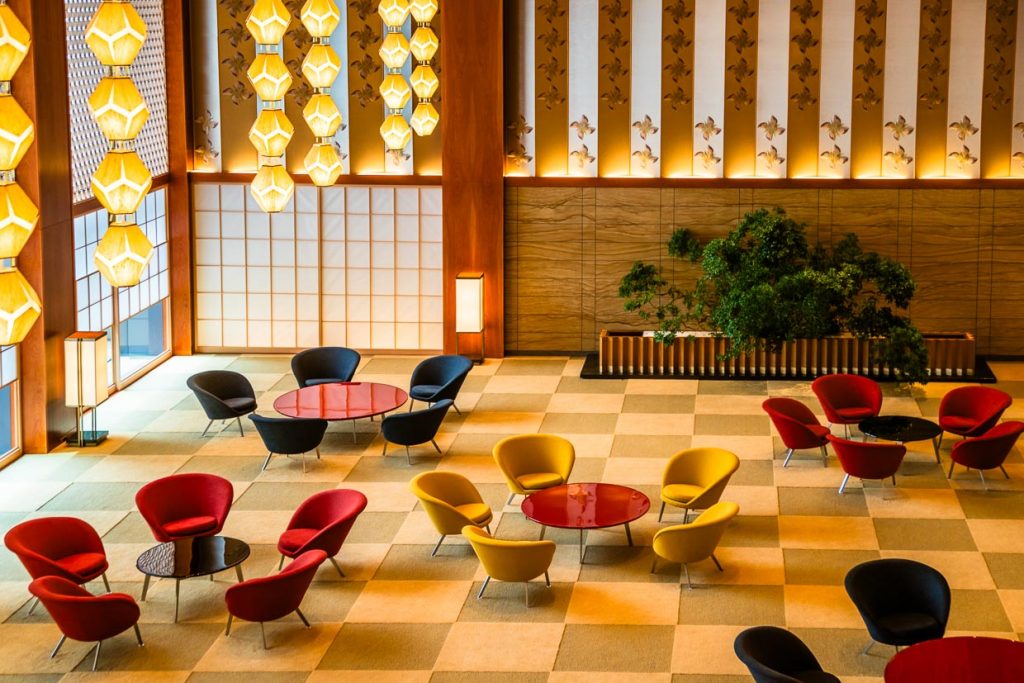
Okura Prestige and Okura Heritage – reminiscence of days gone by
Is it now a great success or a desperate attempt to do justice to two worlds?
The symbol of Japanese post-war architecture has been replaced by a sleek 41-story glass building ahead of the Olympics. The reopening took place in mid-September 2019. In the week following the re-opening, we had the opportunity to stay at the 5-star Okura Prestige Hotel. During the tour of the new flagship property of the Okura Hotel Group, we see the first guest reactions to the two hotel buildings. The Okura Heritage has 6 stars and is 75 meters high. The Okura Prestige has 5 stars, is 188 meters high and only has rooms for hotel guests from floor 28.
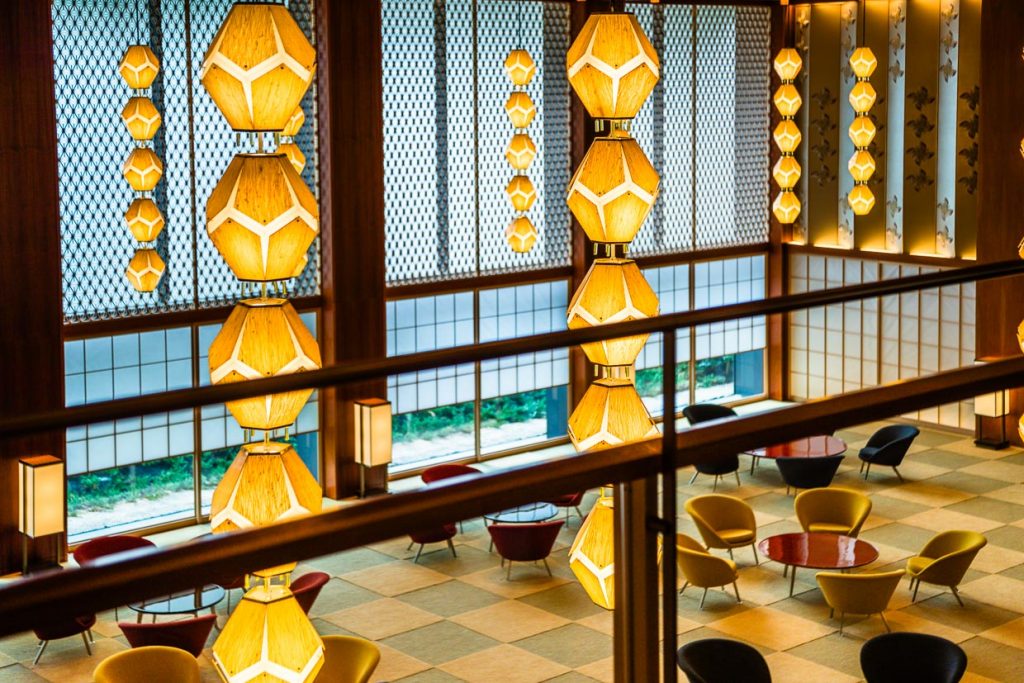
“Sorry sir” – even Cary Grant didn’t get a room.
There are some parallels between the old cult hotel and the earthquake-proof new building. Both hotels were completed with the Olympic Games in mind. As in 1964, Tokyo will again host the Summer Games in 2020. Already, the hotel is fully booked for the duration of the competitions. The Hollywood movie “Walk, don’t Run” begins at the Hotel Okura. Cary Grant tries in vain to get a room. “Sorry sir, Olympic you know”.
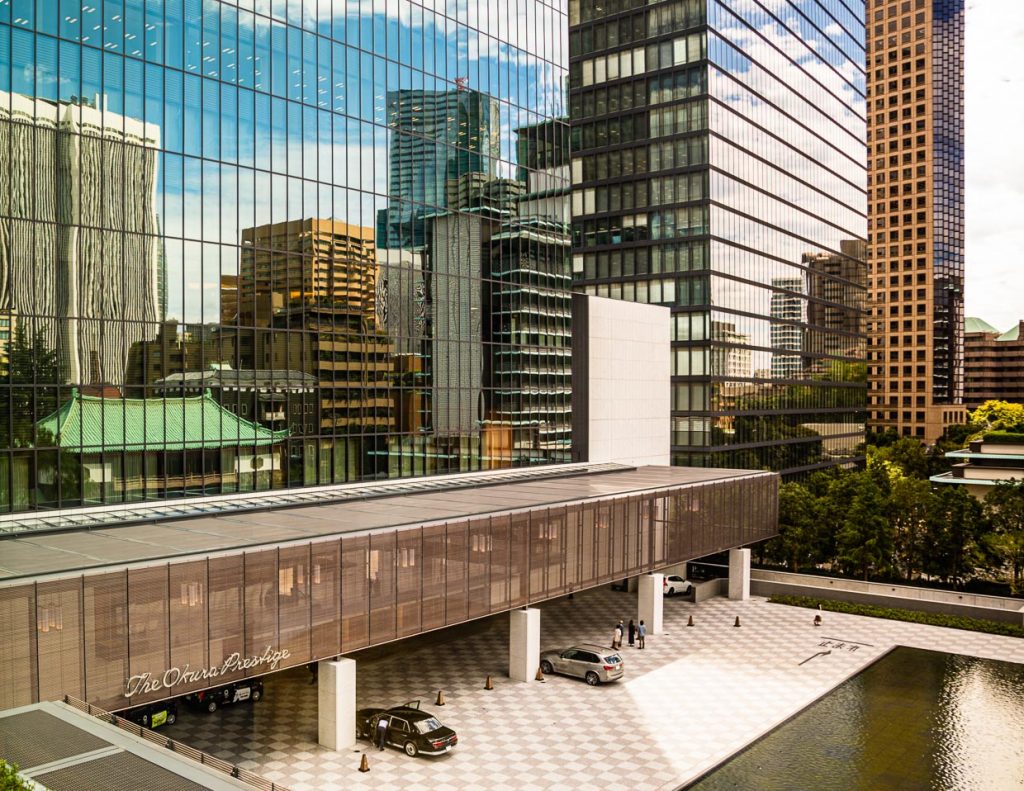
The old Okura Hotel was a showcase of fine Japanese craftsmanship paired with modern and light architecture. In order to save the ambience of the old Okura into the modern glass cuboid, they commissioned the son of the star architect of the time. Yoshio Taniguchi also designed the new building of MOMA – Museum of Modern Art in New York. In the new Okura building, he remained true to the designs of his father, Yoshiro Taniguchi. All key elements can be found again. Particularly striking are the famous light fixtures and the airy seating arrangements in the shape of a plum blossom in the right part of the spacious lobby.
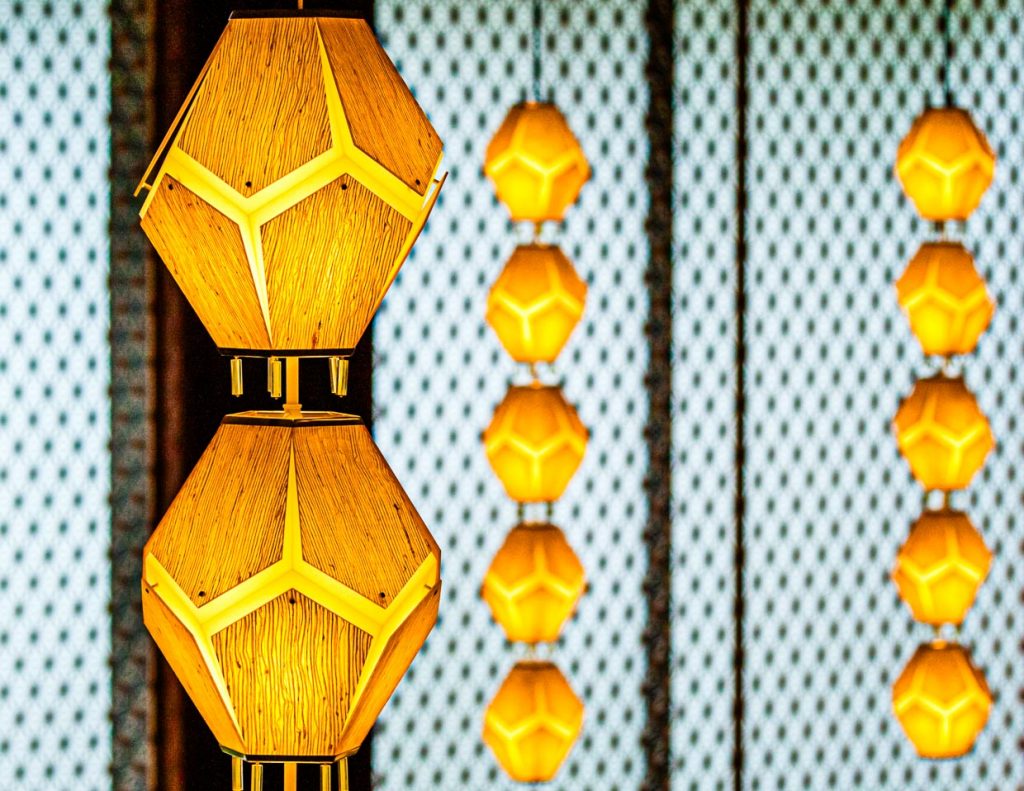
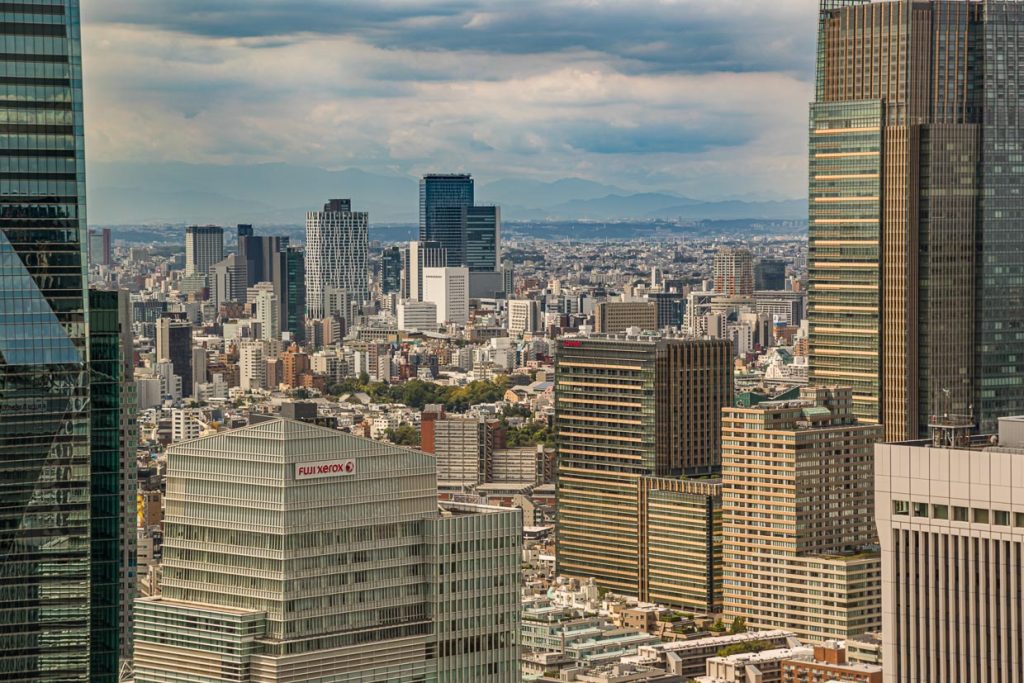
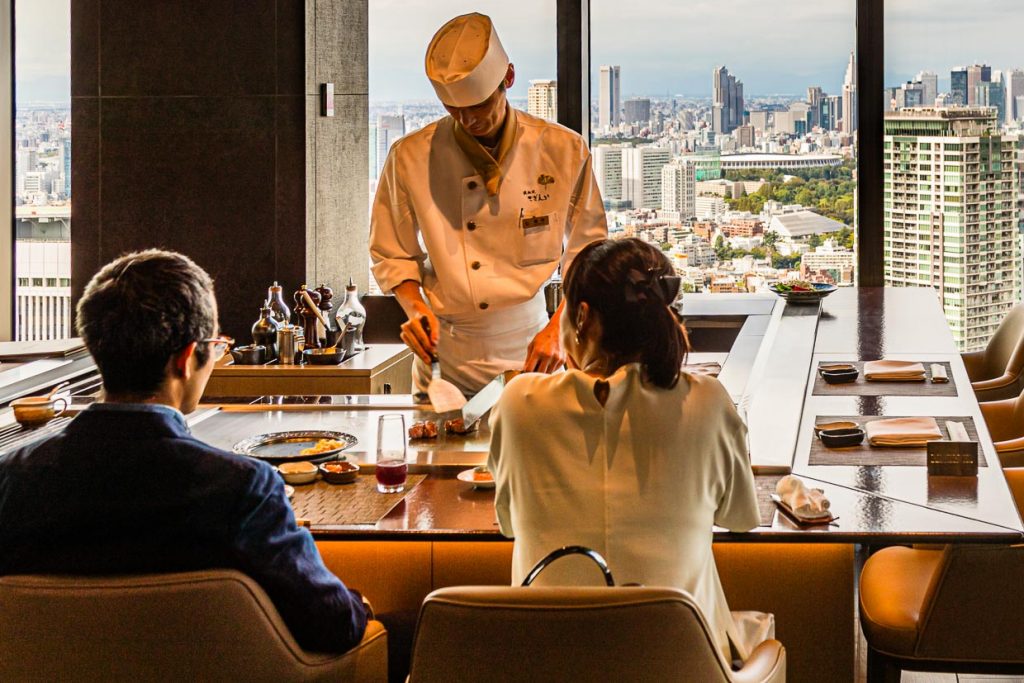
The Okura – Japanese hospitality and modern luxury
Tokyo is a mega-city, building land rare and expensive. Renovation was out of the question for both economic and structural reasons. To make the hotel competitive again, the rooms had to be enlarged. This could not be reconciled with earthquake-proof construction and became the death knell for the design icon that was so popular all over the world.
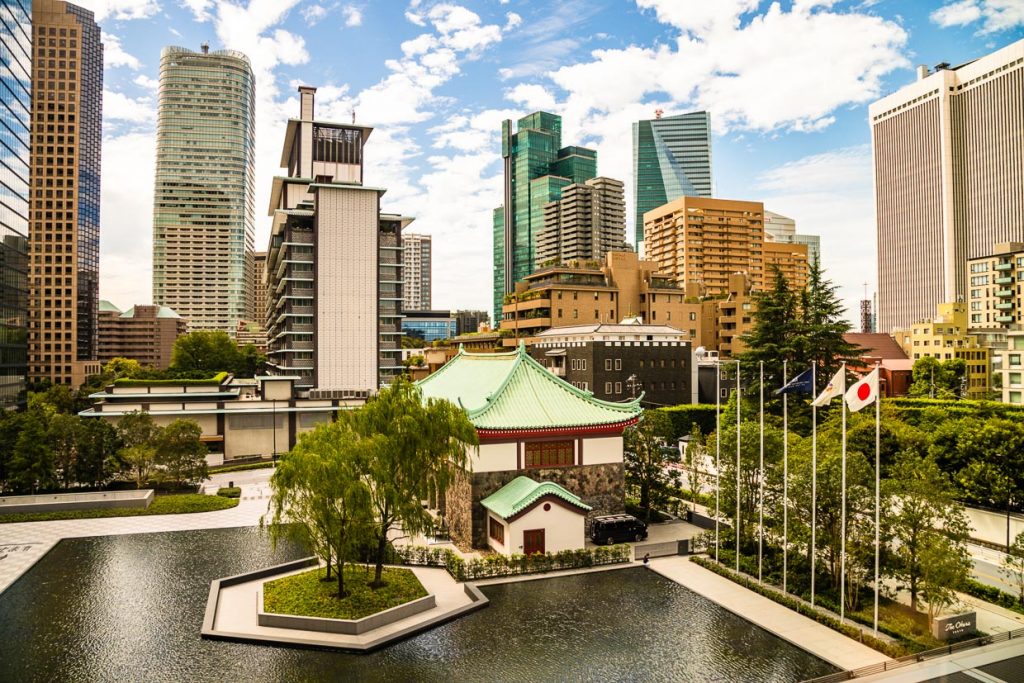
The new building has now also made better use of valuable airspace. Standing in the bar on the 41st floor and looking into the immediate neighborhood, it quickly becomes clear that demolition and new construction are currently being practiced intensively. The south wing of the Hotel Okura, a building from the 1970s on the opposite side of the street, is also to make way for a new building after the Olympic Games. The average size of the rooms has grown to around 48 square meters. In return, the number of rooms has shrunk from around 800 to 508 compared with the old Hotel Okura.
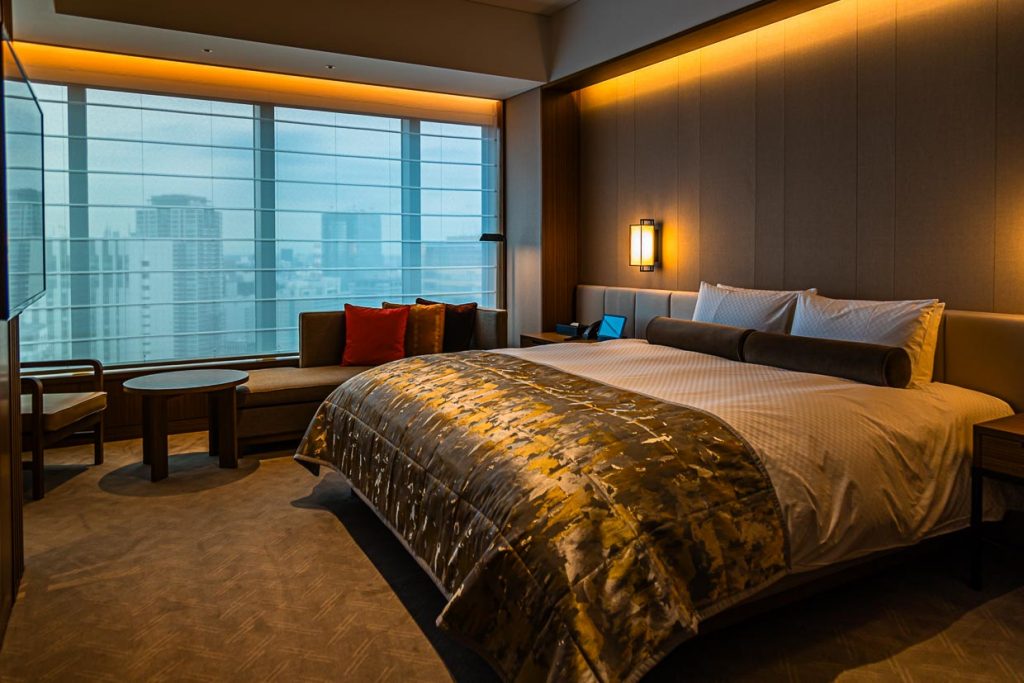
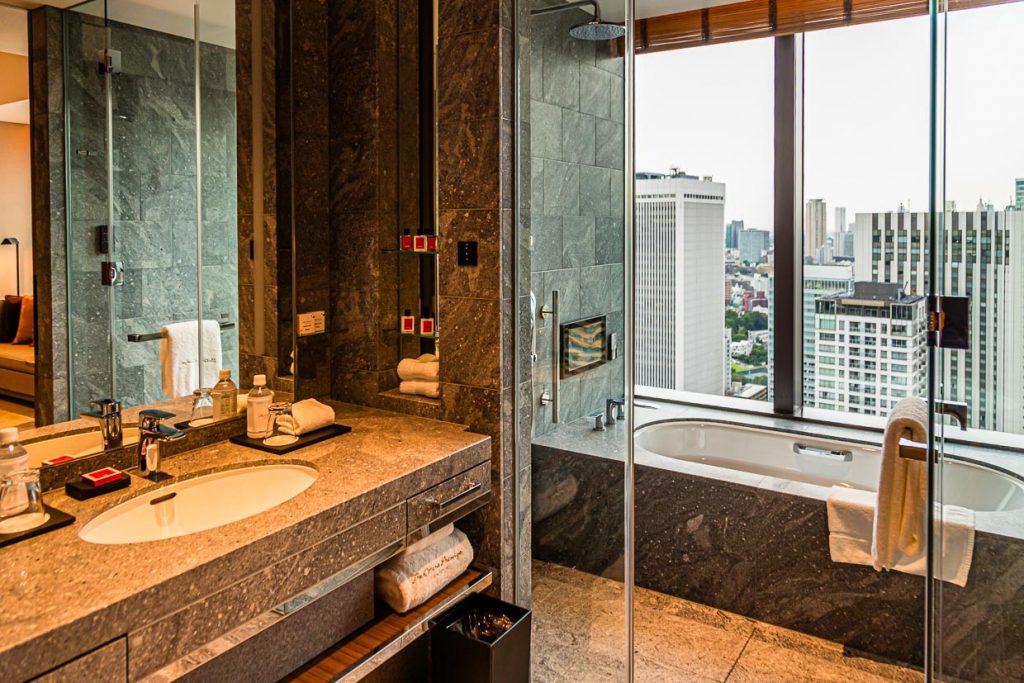
The Okura – more than a hotel
Money is made at the new Hotel Okura with an expanded business model.
The hotel has reduced the number of rooms, but increased the room rates. Internally, the lobby is called Lobby Prestige Tower on the 5th floor, but it is actually at ground level. This is because the hotel has been built not only in height, but also in depth. The Heian Room, a banquet hall designed for receptions and events for up to 2,000 guests, is the largest in Tokyo and is located on the ground floor. So are 18 other function rooms for conferences and wedding ceremonies.
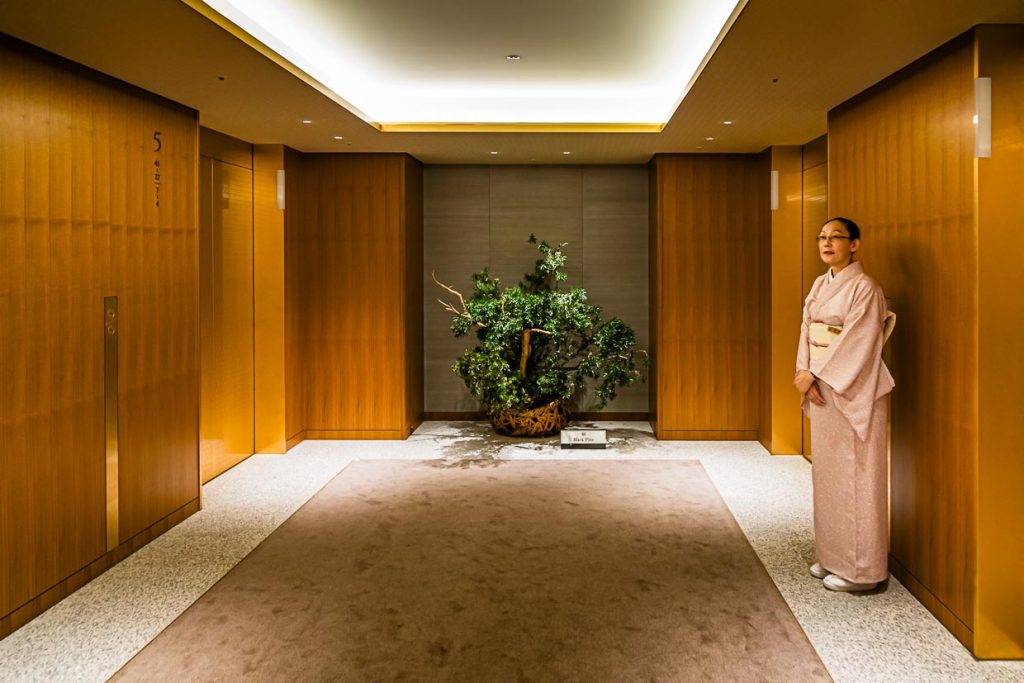
For hotel guests, the floors starting on floor 26 are interesting. There, global travelers will find their usual luxury in the form of a swimming pool, spa and fitness rooms with views of the city. From floor 28, the guest rooms begin. Here, too, guests can look out over the skyline across the entire width of a room. The world below is all work. That’s because the owner rents out almost half of the Okura Prestige Tower as office space.
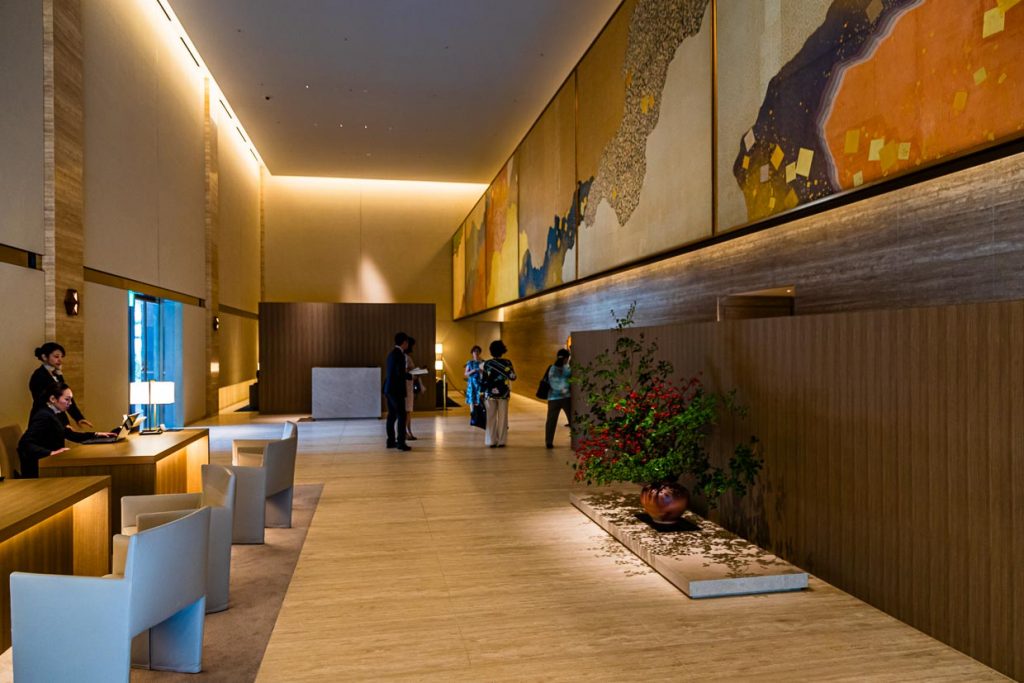
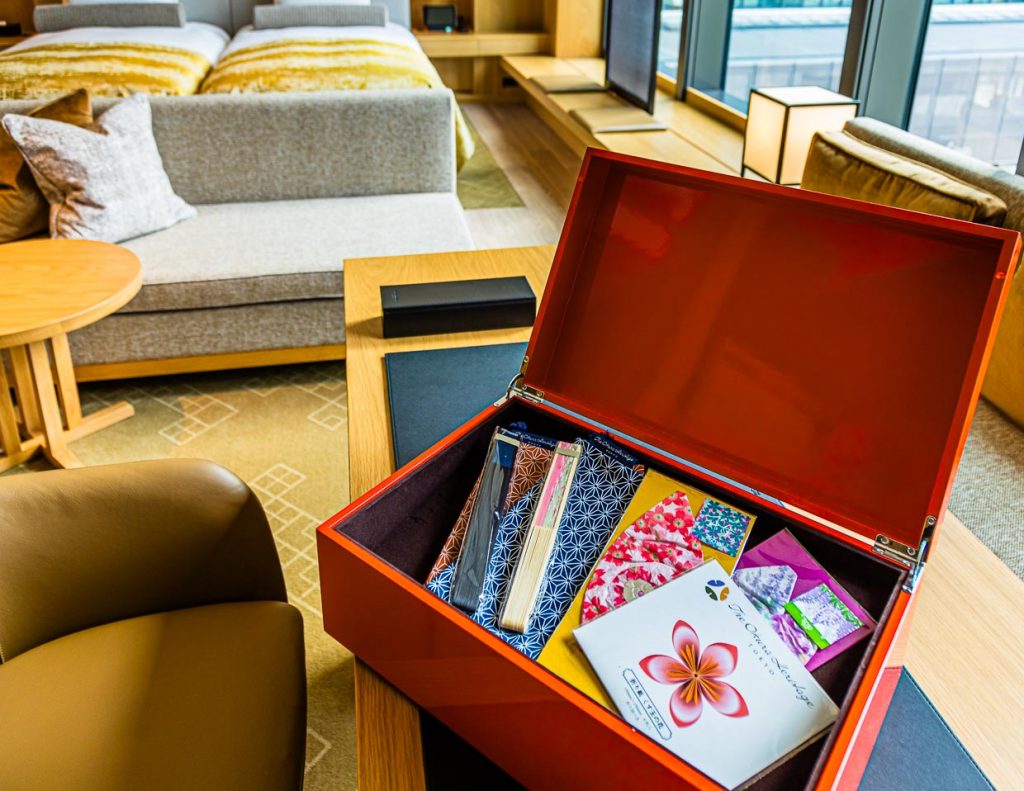
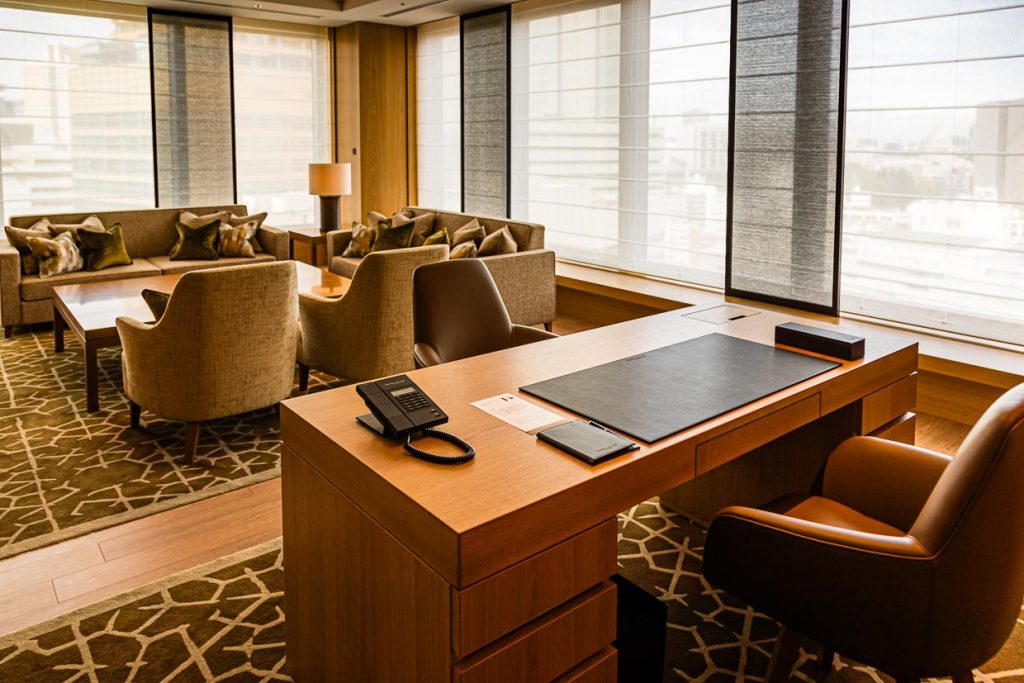
The lobby is alive – old atmosphere behind a new facade?
The balancing act seems to have succeeded. In the lobby, one feels transported to the 60s. But we also experience the new and old heart of the hotel in these first days after the opening as a bit of a museum. Guests inspect woodwork, wall surfaces and huge flower arrangements in whispers. Things get a little livelier at an evening concert, for which the plum blossom arrangements are pushed to one side. One would wish for a little impulse of life from the lively and constantly roaring mega-city of Tokyo for this place.
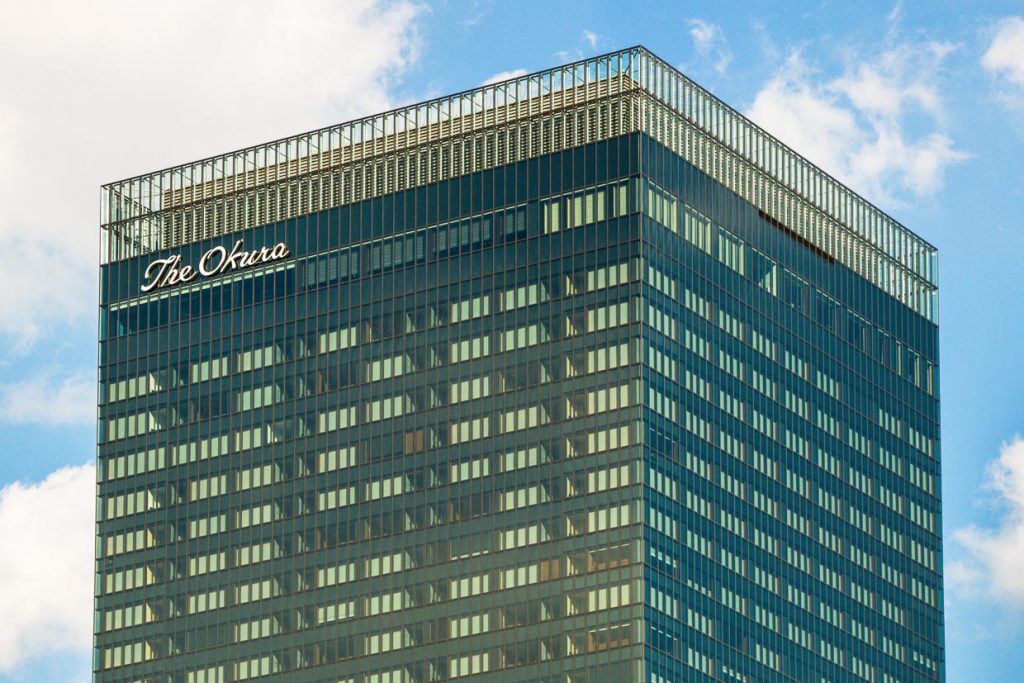
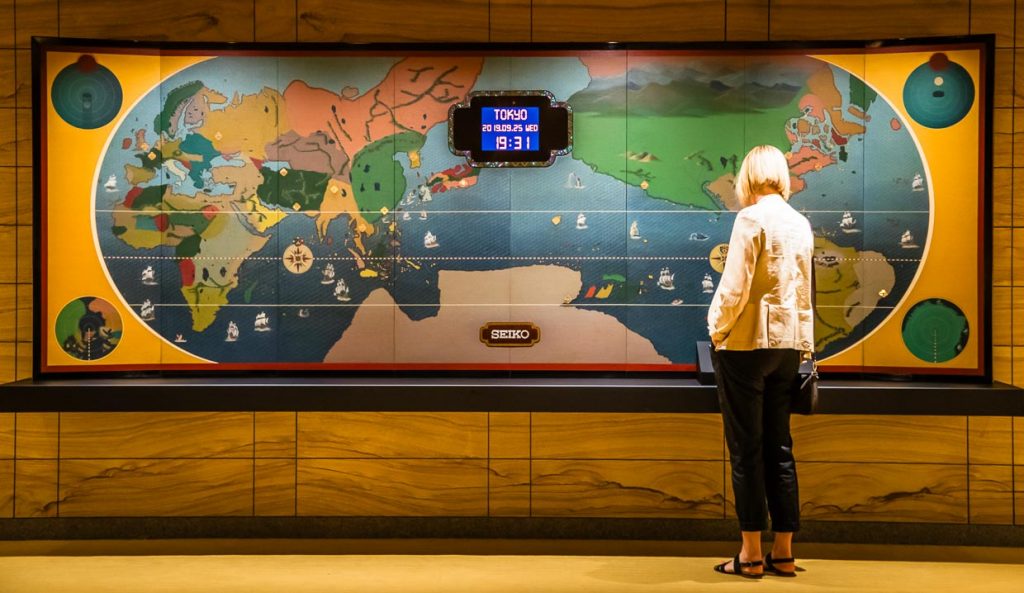
The cost of half board was not charged by the hotel

